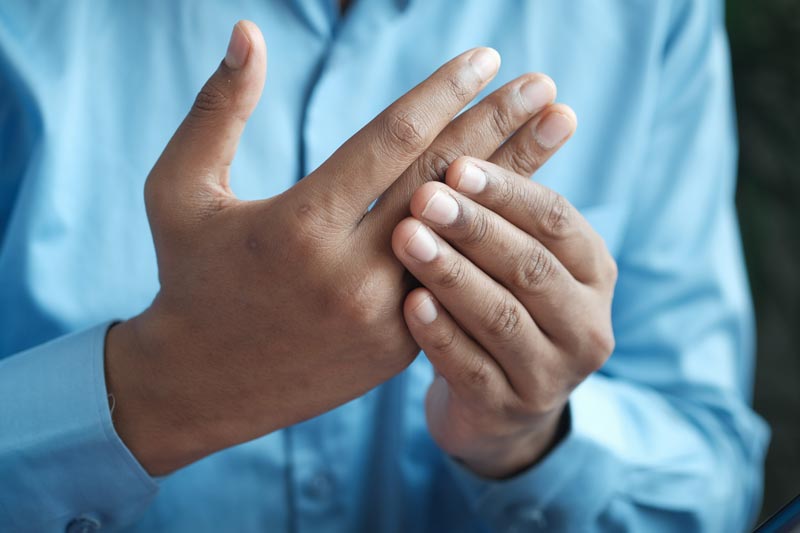Arthritis
Arthritis is a ”catchall” term for over 100 different types of joint inflammation. Arthritis causes stiffness, soreness and swelling where two bones meet—such as the shoulder, elbow, hip and knee. Common types of arthritis include osteoarthritis, rheumatoid arthritis, lupus and gout.
Symptoms of arthritis
All types of arthritis symptoms involve some degree of:
- Joint pain or soreness, especially after activity
- Joint swelling and warmth
- Joint stiffness and decreased ability to bend a joint
With osteoarthritis, the most common form of arthritis, you may hear clicking and crackling sounds when you bend your joint, particularly in your hip or knee. Some forms of arthritis can cause additional symptoms, including fever, fatigue, muscle aches, eye pain, and skin redness.
If you notice these symptoms, see a doctor soon. Early arthritis treatment can prevent loss of mobility and keep pain and discomfort in check.

Types and causes of arthritis
Arthritis can have a number of causes, depending on the type.
Osteoarthritis
The main cause of osteoarthritis is wear and tear of cartilage and bone. Cartilage is smooth, flexible tissue that cushions the ends of bones and helps them move freely without friction. A joint injury also can lead to osteoarthritis years after the injury.
Rheumatoid Arthritis (RA) and Lupus
With these forms of arthritis, your immune system mistakes healthy tissues as harmful to your body and attacks them, causing inflammation. In RA, your body makes antibodies against the lining of your joints. With lupus, your immune system attacks your joints and other parts of your body. Environmental factors and genetics play a role in these types of arthritis, but the exact cause is not known.
Gout
Gout is another common form of arthritis caused by a buildup of uric acid crystals in your joints. Gout is most common in men older than 40. A diet rich in foods and beverages containing high levels of purines, such as game meats, certain shellfish, and alcohol contribute to high levels of uric acid. Other risk factors include diuretic medicines, joint injury, sudden weight loss, and dehydration.
Factors that increase your chances of developing arthritis include being overweight, a family history of arthritis, being older than 65, being a woman (except for gout), and lack of regular physical activity.
Diagnosing arthritis
Your doctor may use a combination of these methods to diagnose arthritis, and to pinpoint which type of arthritis you have.
- Discussion of your medical history and the symptoms you’re experiencing
- Physical exam of your joints, muscle strength, movements, and other affected areas of your body
- X-rays to reveal the extent of any joint and bone damage
- Blood tests to look for specific antibodies, anemia, and signs of inflammation
- Joint fluid analysis to examine the contents of the joint space including inflammatory cells and uric acid crystals
- Arthroscopy, in which a doctor uses a small camera under your skin to look up close at the damaged joint
Treating arthritis
Arthritis does not have a cure. But medications can ease pain and reduce inflammation. Physical and occupational therapy can help maintain the flexibility of your joints and overall mobility. Keeping your weight down, exercising regularly, and applying cold and warm compresses to trouble spots can also provide comfort.